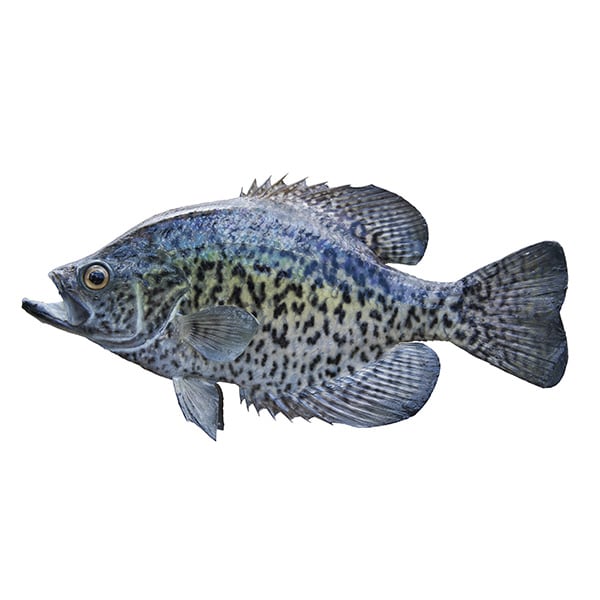- SCIENTIFIC NAME
- Pomoxis sp.
- CLASSIFICATION
- Fish
- LIFE SPAN
- 7-8 Years
- SIZE
- 2-16” | 1-4lbs
- STATE CONSERVATION STATUS
-
- Unprotected
- FEDERAL CONSERVATION STATUS
- Least Concern
- GAME STATUS
- Game
- Washoe
- Humboldt
- Pershing
- Churchill
- Mineral
- Lyon
- Douglas
- Carson City
- Storey
- Elko
- Lander
- Eureka
- White Pine
- Esmeralda
- Nye
- Lincoln
- Clark
Habitat & Range
Crappie (both Black and White subspecies) are native to the fresh waters of east-central North America. In Nevada, Crappie can be found in warmwater lakes and reservoirs throughout the state, with Black Crappie in the southern region.
Threats
- Disease
- Predation
Natural History
The Crappie is a popular game fish known for being a reasonably sized pan fish. Abundant in warm, mildly turbid lakes, reservoirs and stream backwaters, Crappie are opportunistic feeders and will prey on whatever is available. Their spawning activities range from March until July, depending on water temperature. A female may spawn multiples times through the summer with more than 1 male. Additionally, the Black and White Crappie will hybridize. The spines on the longer body of adult Crappie, protects them from most predators.













